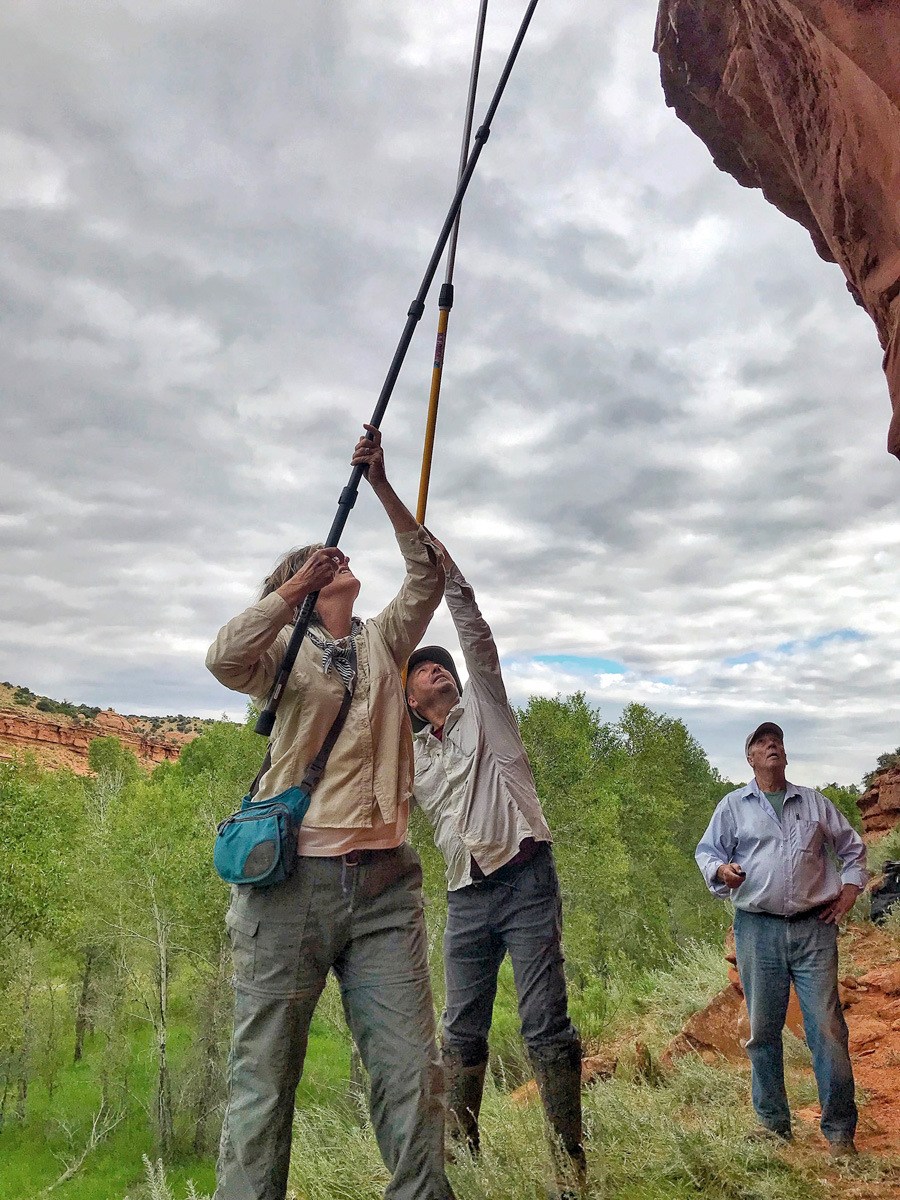
With Careful Science and Indigenous Input, an Archeologist Unlocks Rock-Art Mysteries
By Andrew Stuart
Cave paintings and other forms of rock art are among the most compelling legacies of prehistory for many of us. Who can gaze upon the exquisite wildlife scenes from the famous French caves of Lascaux or Chauvet and not be entranced? Yet archeologists themselves have long considered rock art of limited use. The discipline is concerned with chronology, and dating rock art has been difficult. And these images carry us into the religious realm, which, however central it was for ancient people, can elude scientific analysis.
But that’s changing. In a half century of research, archeologist Larry Loendorf, of Albuquerque, has pioneered a rigorous scientific approach for recording rock-art sites. That approach has produced thrilling insights into prehistoric lives, including in our region.
“The first thing you need to do is stop,” Loendorf said, “before you walk up to the panel, and look over the ground in front of the panel, because there’s stuff there. You’d be amazed at what’s there at the base of the panel, when you stop and start looking.”
Loendorf’s technique includes ample attention to the rock art itself, whether pictographs, painted imagery, or petroglyphs, pecked or abraded images. Rock art is photographed and drawn. Pigment is analyzed. Yet what surrounds the “panels” is equally important, he said.
The implements of creation – paintbrushes, palettes, pecking stones – often remain. And Loendorf said Native American consultants have opened his eyes to subtler elements of these ancient places of ritual.
Early on, two Native consultants urged him to “pay attention to the plants.” The advice baffled him for years, until it finally clicked.
“Ultimately it hits me when I’m standing in tobacco knee-deep at a rock-art site that I should have been paying attention to the plants,” he said. “The lessons that you get from American Indians are oftentimes not about the imagery itself. They’re more about that context, what that site is all about, what else is at that site.”
Loendorf has led surveys in the Guadalupe Mountains, just north of the Texas-New Mexico line. He’s found plants of ceremonial significance at 80 percent of rock-art sites. There’s tobacco, but also datura and Texas mountain laurel – dangerous plants with potent effects on consciousness. They were likely used here in rituals, and have persisted in the landscape. At one site, there was sufficient native tobacco for a Hopi advisor to harvest some, for ceremonial use among his people.
Others features accentuate the sacred dimension. Rock-art sites are often surrounded by cairns – small stacks of rocks. In the Guadalupes, Indigenous consultants have identified these as shrines, or prayer stations.
“You’d walk right past these things and think nothing of it,” Loendorf said. “But they didn’t walk right past those things. They’d notice those things.”
Rock art is visually arresting. But ritual can appeal to other senses. In one rock-art cave in the Guadalupes, Loendorf’s team found the sounds they made were clearly audible to colleagues below. In prehistoric ceremony, flutes or drums played here would have echoed to the community nearby.
“There’s no question but what that’s got something to do with acoustics,” Loendorf said. “I can just imagine what it would be like to be there and have some ceremony going on up in that little cave and the noise rolling up and down the valley…. To be a young kid – and think about what was happening.”
Loendorf has embraced scientific innovations. A digital tool called DStretch helps him detect pictographs invisible to the naked eye. And new techniques allow for dating pictographs. Loendorf typically uses samples that have broken off, so as not to damage images. In a forthcoming study, he plans to date 50 sites in the Guadalupes.
Rock art has always enthralled. But in Loendorf’s scientific approach, it’s opening new vistas in understanding our region’s first people.
Nature Notes is produced by Marfa Public Radio with the Sibley Nature Center. The program can be heard each Tuesday and Thursday, at 7:45 a.m. and 4:45 p.m., Central time, on KRTS Marfa, 93.5 FM, and KXWT Odessa/Midland, 91.3 FM. This episode was written by Andrew Stuart.











